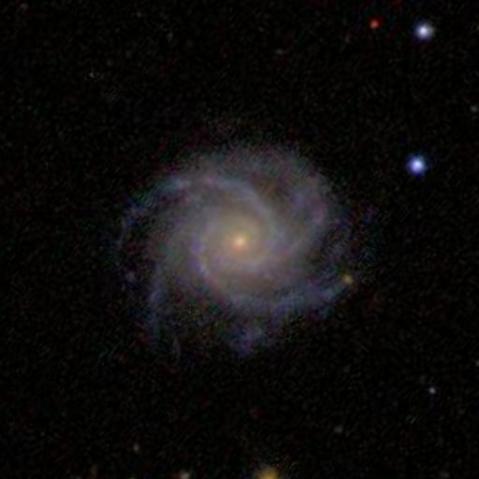A Summer Spent Finding Our Galactic Twin
Today’s post is a guest post by A-level Student, Tim Buckman from Portsmouth Grammer School, who spent 6 weeks working with me at Portsmouth University this summer through the Nuffield Science Bursery Scheme.
Finding Our Galactic Twin
For millions of years humans have attempted to understand their place in the cosmos.
We went from the flat Earth to the globe; from a geocentric to a heliocentric solar system, and now we understand we live in the outskirts of a spiral galaxy – a massive collection of stars.
For years though astronomers have endeavoured to find out what The Milky Way, our home galaxy, actually looks like in detail. The difficulty lies in the fact that we live within it, and it would take thousands of years of travel to get a good photo opportunity. The best models suggest that our galaxy is a spiral galaxy with between two and four spiral arms, a central bulge and a bar at the centre. Using what data we have, artists have tried to create an impression of our galaxy’s structure and form, the best guess being the one below.
Recently, the European Southern Observatory released an image of a galaxy which they called as a twin for our own. On the face of it the galaxy (below) looks just like our own, it has a similar number of spiral arms, it has a central bulge and, if you look closely, even a small bar at the centre. It’s name is NGC 6744 and from July of this year, it became our Galaxy’s twin. There is a small problem with this galaxy however, or should I say, a large problem; this galaxy is actually twice the size of our own in mass and size and therefore is a bit of a stretch to suggest it as a copy. We are again stumbling in the dark to find more about where we live.
This is where the Galaxy Zoo project CAN help. It aims with the help of ALMOST 450,000 volunteers, to classify as many galaxies as possible from the Sloan Digital Sky Survey. By using this information, we can start to narrow down a list of galaxies to look at. By filtering out those which were seen to have features and were relatively face-on to the camera, we end up with a list of around 17,500 galaxies in total. Again by filtering out those galaxies with the same mass, number of spiral arms and having a bar like the Milky Way, we find that there are just 9 galaxies which fit this criteria. Of these nine galaxies, the one which looked the most like the artists impression was the one shown below. This galaxy, captured through the Sloan Digital Sky Survey (SDSS) camera is the most likely of the galaxies we have seen to be a clone of our own.
The fact remains that this might, possibly, not be the best Milky Way ‘clone’ in the universe, there are countless galaxies yet to be photographed and there are thousands of galaxies which, due to their orientation, make it very difficult to see whether they are anything like ours. However, with rapid advances in technology, this dream of finding the shape of our galaxy is just around the corner.




Perhaps the Hubble Heritage team should consider imaging this galaxy!
It would be very good PR.
What a fantastic project! 🙂
Alexandre on the forum has been looking for candidates too . . . http://www.galaxyzooforum.org/index.php?topic=276860.0
I must admit I can’t see the bar in your chosen one! But then my eyes are not the best in the world! I hope you enjoyed your summer – well done for getting onto the Nuffield scheme. 🙂
It’s like looking into a mirror.
Is there a reference number for this galaxy?
Oh, sorry. Please ignore that post. I went back through your forum topic and found it! http://cas.sdss.org/dr7/en/tools/explore/obj.asp?id=587732054853943533